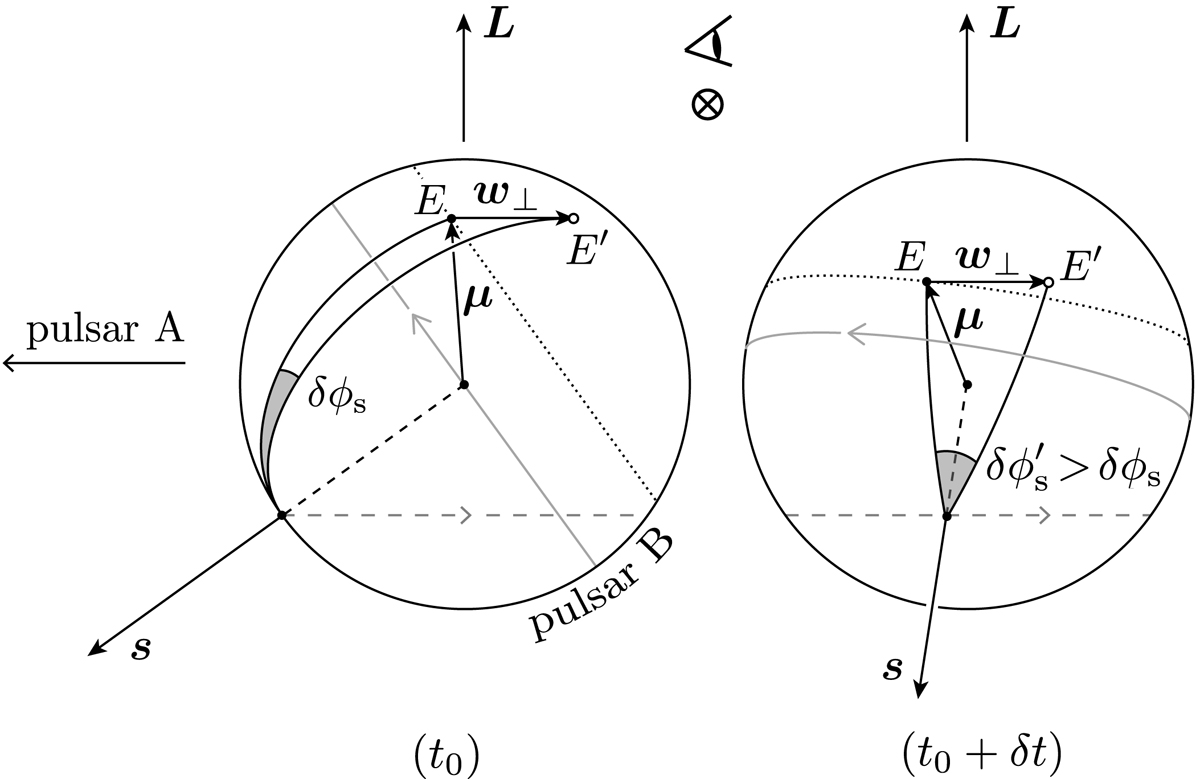Fig. 10.

Cartoon representation of spin-phase delay (δϕs) produced by the impact of the wind of pulsar A, with a perpendicular component to the LOS (w⊥) for two different phases of geodetic precession: at time (t0) and at a later time (t0 + δt). In this representation, the observer’s LOS is perpendicular to the plane of the figure, when looking down onto it; the plane of the orbit is perpendicular to the orbital angular momentum vector, L; and pulsar A is located to the left of pulsar B. The precession of the spin axis, s, about L, proceeds along the path shown with a dashed, grey line, in the direction indicated by the arrow. The NS’s equator is shown with a solid, grey line, with the grey arrow indicating the spin direction; the magnetic axis, μ, rotates about the spin axis in the same direction. In both instances of time, the action of w⊥ causes the deflection of the emission (assumed here to be at the magnetic pole) from position E (solid black point) to E′ (open circle). The equivalent spin-phase delay, δϕs at (t0) and ![]() at (t0 + δt), is measured as the polar angle between E and E′. For the same wind magnitude (w⊥), it can be seen that
at (t0 + δt), is measured as the polar angle between E and E′. For the same wind magnitude (w⊥), it can be seen that ![]() .
.
Current usage metrics show cumulative count of Article Views (full-text article views including HTML views, PDF and ePub downloads, according to the available data) and Abstracts Views on Vision4Press platform.
Data correspond to usage on the plateform after 2015. The current usage metrics is available 48-96 hours after online publication and is updated daily on week days.
Initial download of the metrics may take a while.


